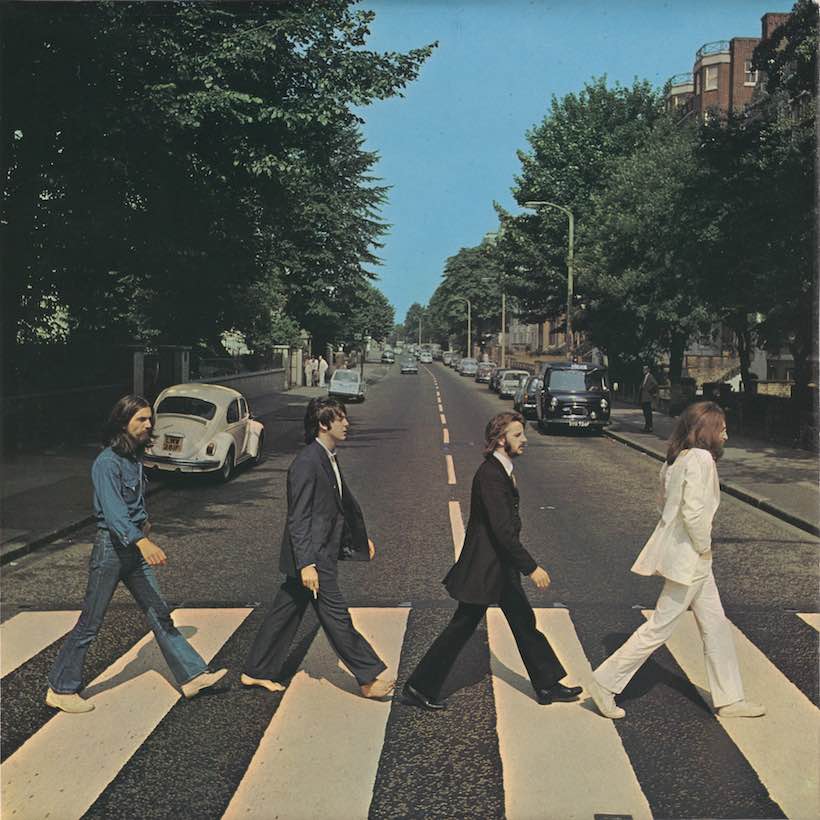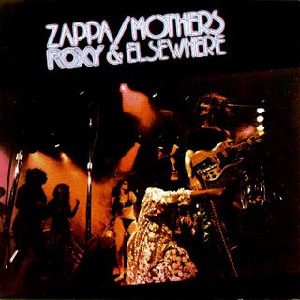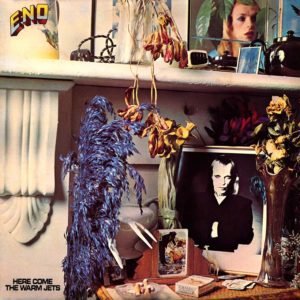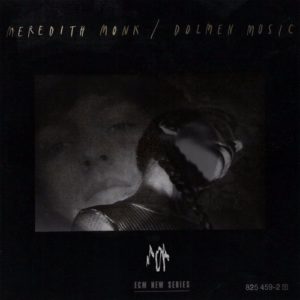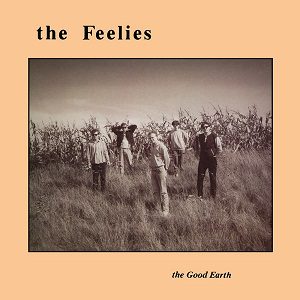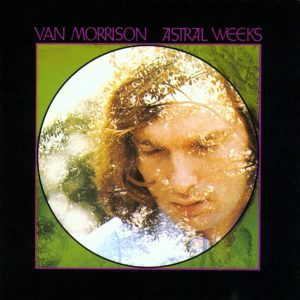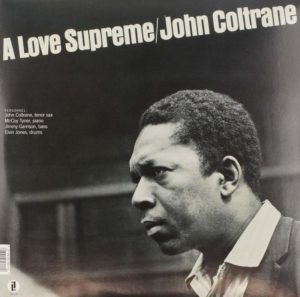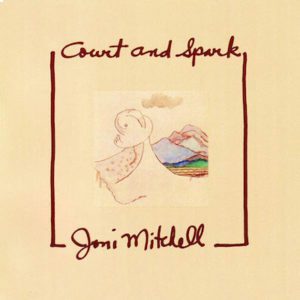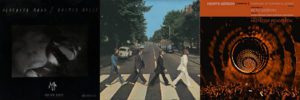
(Listed in chronological order of encounter.)
1. Abbey Road, The Beatles (Apple)
(first heard upon release, September 1969)
I have written about this album so much! I have written about “The End,” at some length, and I have written about how much George Harrison’s presence on this album means to me, how monumental I think “Something” is. So much have I written about this album that it would be hard to come up with anything new to say, and yet. It’s worth repeating that Abbey Road was one of the earliest of albums for me, a thing where I set the needle down on the LP, and then later flipped it over to listen to the obverse, as distinct from 45s, which I also had in some profusion, usually just playing the “A” side.
The main thing to be said about Abbey Road now, perhaps, is that we danced to it a lot: my mother, sister, brother, and I. Not my dad, so much, because I think he was not around at the dinner hour in that way. He came home later, and was not given to dancing. But my vivid memory is of dancing in the kitchen, dining room, and living room to Abbey Road, and it is worth asking which songs merited such dancing. Maybe “Come Together,” though the implications of the chorus were unknown to me then, likewise, “toe jam football,” “juju eyeballs,” etc. Then there was the big ending of “She’s So Heavy”—we could have been dancing to that, which I found incredibly ominous, and still find incredibly ominous and important (Ed Palermo’s big band has a good cover of it). Maybe we danced to the dueling-guitar-solo breakdown on “The End,” or maybe we danced to “Octopus’s Garden,” which I liked because, well, you know, I was seven years old on the date of release. I really liked the song on the album no one likes: “Maxwell’s Silver Hammer.” It might have been that.
Let me elaborate: my mother loved this album—it was she who purchased it—and my taste, in those days, was often dependent on what my mother liked (Simon and Garfunkel, e.g.), and she would dance with us, while dinner was being assembled, and this record was playing, and her marriage was disintegrating around her. Sad and beautiful, then, austere and majestic, playful and ominous, all at the same time, “Once there was way to get back homeward.” Indeed.
2. Roxy & Elsewhere, Frank Zappa & The Mothers of Invention (Discreet)
(first heard summer of 1975)
I cannot overstate the value of an older sibling in the early phase of musical appreciation. In my case, the fact that my mother and my sister were the first two major music enthusiasts in my life seems exceedingly important to me now—that is, that they were both women. My sister—who also often had older, musically inclined boyfriends, so I was getting some of their accumulated wisdom, too—seemed to know about everything before my friends did, and gave me The Dark Side of the Moon and John Barleycorn Must Die in the same year that my wastrel middle school friends gave me Made in Japan for my birthday. I was such an outsider in middle school that the fact that my friends gave me an album seemed unbelievable to me, of unaccountable generosity and kindness. I assumed it must be a mistake of some kind. The Deep Purple obsession did not last, however. Whereas Pink Floyd and Traffic lasted a bit longer.
Among the things my sister liked, however surprising, was Frank Zappa. She liked the crazy arrangements and time signatures, especially on Over-Nite Sensation, and played him for me, and then got bored of him a few years later (though she did take me to see him play at the Palladium—my first concert), whereas a lifetime, on and off, of Zappa preoccupation seized control of me thereupon. I liked the middle period stuff best, like from Uncle Meat to Orchestral Favorites. I disliked the poppier stuff of the earlier 80s. But I always admired Frank’s impulsive mind, and, as others have said, his sheer gift for unusual melodies. I still feel that way, forty years later.
3. Here Come the Warm Jets, Brian Eno (Island)
(first heard sometime in 1977)
When I was in high school I worked at the radio station. My school, which was a private school, had all the privileges associated with such a thing, and so it had a ten-watt transmitter that broadcast at night—WSPS were the call letters—and this was considered the most outcast of school projects. People really thoroughly ignored WSPS, at least when I first got involved. But as I was a person who had grown up in the public school system, and was not a good fit with the beautiful and poised of Horace Mann and Greenvale, WSPS was a welcome hideout. The others who labored there, and it was tiny community, just twenty or so of us, were all people with, extracurricularly speaking, nowhere else to go. This was fine with me.
It was almost as if WSPS was more interested in the electronics of the transmitter than in the things we were going to broadcast, so meager was the preparation for the actual programming. There was sort of half-hearted attempt to read some news occasionally, at the top of the hour, between 7 and 10 p.m., usually just some rehashed Reuters or Associated Press, and then there was music. I got interested, I think, because of my voracious appetite for music, and in particular a voracious appetite for music that no one else liked all that much, my school being a school that really liked, for example, the Grateful Dead and Little Feat.
What this has to do with Brian Eno is that somehow the record companies would send promo copies of things to WSPS, despite its utter lack of audience, most of which were played at the station (on the turntables!), or else spirited away into the collections of various kids who participated. Records that no one else wanted just sort of hung around. I remember vividly that no one wanted Viva! by Roxy Music, a live album from mid-period Roxy, and I took it home at one point, and, even though it’s just a live album, I knew none of the songs before, and I became completely obsessed with this one song, “In Every Dream Home a Heartache” (and if you like that song, like I do, you will treat with greatest respect and admiration the band’s performance of it, a completely perverse non-hit album cut, at the Rock and Roll Hall of Fame last year), which in turn led me to the album from which it came, For Your Pleasure, by Roxy Music, a masterpiece from tip to stern, and that album led to the first Roxy album, which I also love, and then of course to Here Come the Warm Jets, the first “solo” album by former Roxy Music member Brian Eno, who then went by just Eno.
After hearing Warm Jets, I undertook a complete course of study on Eno, not completed as of the time in which these lines were composed. The dismantling of the popular song was what I loved here on this first album, and also the strangeness of the synthesizer as employed by Eno, its presence everywhere and nowhere, its totally non-musical qualities at times, and the perversity of the lyrics, inexplicable outbursts of the instrumental players, everything applied in obscure ways, to obscure ends, against the prevailing norms of the popular song. What an amazing record, though in truth just about every record Eno made for the next seven or eight years was amazing, especially, of course, Another Green World, but also the monumental Music for Airports, and On Land, and many others. Accordingly, I am still grateful for my apprenticeship at the radio station, on the island of outcasts.
4. Remain in Light, Talking Heads (Sire)
(first heard upon release, October 1980)
This happened when I was in college. I would have been just starting sophomore year. Sophomore year for me was exactly as rough as they say it is according to the lore of college life. I think drugs and the drinking were obscuring the goals of a liberal arts education. My roommate dropped out for a while, and they installed another roommate, and he left, too, because maybe I was just too weird, and then a friend moved in and quickly moved back out. (I think he owns a bookstore now up the Hudson somewhere.) I spent the rest of the year in a large single taking a lot of drugs.
Still, it would be hard to describe the seismic change which took place upon encountering this Talking Heads album at its release. I could manage that. I suppose I bought it on Thayer Street, the commercial district near campus, which in those days had a two or three record stores. Record stores were where they sold packaged music products. I went to them very often. I spent most of my disposable income there, at the record stores, or on drugs and alcohol. Of the record, let me note that David Byrne is more avuncular now than he was then. Back then, this album felt somewhat menacing and more angular and desperate than funk was supposed to sound. Funk was supposed to sound like good time music, sexy and funny and proud. The African variants were more revolutionary, had liberation theology around them. I hadn’t really heard Fela Kuti yet, so I didn’t know the influence that he cast over the album. The Talking Heads sounded like they were trying to break out, though, but in a more frontally assaultive way than on Fear of Music, which has also stood the test of time.
For the art school kids, the post-punks, at least the ones who were not in New York City enough to hear DNA, or Bush Tetras, et al., this album brought black music close, dissolved the radio formats, made the players from Funkadelic crossover superstars, popularized funk, and that led me back to Funkadelic, and James Brown, and it was never possible, again, to stand still for all the ignorant carping about disco.
5. Dolmen Music, Meredith Monk (ECM)
(first heard Christmas 1982)
My yen for “experimental” music started at the end of the undergrad time, in part because I was in love with a modern dancer, and modern dancers always seemed to know about unusual music, at least in those days. Lee Katz, the dancer in question, gave me this record for Christmas in 1982. As it seemed to me with many discoveries of the period, I had never heard anything like it. It didn’t even occur to me that people were allowed to sing in this way, or that songs could be made in this way, where they had no lyrics, no obviously perceptible themes, and the music could just kind of go on, with repetition being at the heart of it. I recognized some distant kinship with things I had heard—maybe Meredith Monk appreciated women singer songwriters, heard them at some point, though she had left them far behind. Maybe she had heard minimalism. Maybe she liked medieval music or jazz or non-Western music. But the singularity of the thing, the mumbling of the baritone voice on the suite side of the album, the forcing of musical instruments out of their conventional roles, the blurring of the lines between foreground and background, these all seemed startling. It was all expressive, the goal of the music was to be expressive, as in the stark grief of “Gotham Lullaby,” just Meredith and piano, and because it was meant to be expressive (in a way that popular music had sometimes grown to avoid) it had a real impact.
Meredith Monk became a lifelong hero of mine then and there. (I got to work with her a tiny bit much later, and I count it among the most memorable events of my creative life.) Several other somewhat similar albums from the period had a great impact, too: Steve Reich’s Music for 18 Musicians, Philip Glass’s Glassworks, Laurie Anderson’s Big Science. I also started listening, in the next year or two, to that incredibly important radio show, John Schaefer’s New Sounds, on WNYC. That led in a thousand new directions, as I’m sure it still does for listeners encountering it now for the first time.
6. The Good Earth, The Feelies (Coyote)
(first heard upon release, 1986)
I moved to the mile-square city of Hoboken, NJ, at or near to the time of its greatest relevance to independent music. First I lived on 11th Street and Hudson, across the street from the Maxwell House factory, which almost always smelled like instant coffee. I loved living across from the Maxwell House factory, and around the corner from Maxwell’s, a bar that somehow had become a legendary place to perform for up and coming bands visiting New York City. A lot of musicians lived in Hoboken then, including musicians whom I already liked a lot, and not just because they played in the city, too.
Eventually, these bands all had a label, called Coyote Records, and they had a place to play. No record of that Coyote Records time and place was more meaningful to me than this one. I had nearly religious feelings about it, and still do. I pored over the lyrics as though they were the poetry of the ancients (“late at night / distant voices / burning cars / out on the highway”), and I was arrested by the near telepathy of the drummers and the eerie symmetries of the guitars, not to mention one of the most fascinatingly melodic bass players in music.
I believed that The Good Earth captured some zeitgeist of these times, that it spoke with a secret voice about all that was the early and mid-80s, deindustrialization, the end of the labor movement, deinstitutionalization, the intellectual poverty of the Reagan years, and so on. I think, now, that I was over-reading a bit, and that Glenn Mercer just had a keen ear for lyrics that were open-ended and textural, and these lyrics therefore tolerated free interpretation. But the record spoke to me, and I still think it is one of the greatest-ever uses of the band, as a form. Over the years I have been outed as a particularly ardent fan, and in this way came into close contact with the band on occasion, and often I think that has been one of the most worthy and rewarding things I have done as a music critic, that I have loved and supported The Feelies, and the Haledon bands, as well as the Hoboken scene, including Yo La Tengo, The Schramms, Antietam, Speed the Plough, The Cucumbers, Syd Straw, The dBs, The Individuals. A lot of my young adulthood was messy and hard, but not this part. This part was glorious.
7. Astral Weeks, Van Morrison (Warner Bros.)
(first heard, in its entirety, 1988)
I quit drinking, after a long slog with depression, which you won’t be surprised to hear, based on some of the above, and, perhaps unsurprisingly, my taste in music broadened some. Things that I had rejected out of hand for dim-witted reasons suddenly were worthy of investigation, had even become welcome. I stopped apologizing for liking records that were not cool. I would listen to pretty much anything, for the sheer pleasure of it. In this period of openness, I finally bought Astral Weeks. I had read and admired Lester Bangs’s essay on the subject of this music but still somehow missed out. And then I heard, heard “Beside You,” and “Madame George,” and “Sweet Thing,” and I got it, was ready for the message, for the incredible sound of this recording, for the ensemble, for the mix of improvised melodies and folk music and blues. Which led to a very deep dive into the man’s work. I think quitting drinking slew depression, yes, for me, except on the days when Astral Weeks, and Veedon Fleece, and Common One, slew it.
8. A Love Supreme, John Coltrane (Impulse)
(first heard, in its entirety, circa 1993)
And then it somehow happened that I could hear jazz. i mean I could feel, or thought I could feel, what it was trying to say. For me that doesn’t suggest I immediately embraced swing time—it took me a while to love swing time—but rather loving jazz meant loving jazz melody, jazz harmony, and jazz chromaticism. I think to get there I had to dig modal jazz first: “Kind of Blue” and “My Funny Valentine,” etc. That music shared obvious terrain with a rock and roll musical vocabulary, and so it was next door over. But what changed for me with this record was loving what it was about, feeling a music of liberation and spiritual longing as a thing it was okay to revere even as an upper-middle-class white kid from the suburbs. Loving/hearing/feeling the message of Coltrane meant, eventually, understanding that a half-diminished sixth chord, or similar, was the sound of liberation, a loosening of the common Western scales was a metaphor for human struggle, and once I had that down I could hear Ayler, Saunders, Kirk, Art Ensemble of Chicago, Lester Bowie, Don Cherry, Carla Bley, and, ultimately, Ornette and Sun Ra, but more on that some other time. This record was the threshold record, a thing of profundity, grace, and deep human aspiration. It’s the music of the true church.
9. Court and Spark, Joni Mitchell (Asylum)
(first heard singles in 1974; first listened to in its entirety 1995)
My sister passed away suddenly, and among the things to distribute to those who loved her were her records and CDs. As I was saying above, my sister had a gigantic impact on me musically, sort of an incalculable influence, really. Being left with her CDs, I made a mixtape of things for the rest of my family. This little anthology had that metaphysical effect of her brushing your cheek with a kiss, of whispering something (and cackling in that way my sister cackled), as close as a breath, though so far away.
I could just as easily have put Blue by Mitchell here, to indicate that feeling, a real masterpiece, too. And my sister also liked The Wild, the Innocent & the E Street Shuffle (before Springsteen got all famous), which I can’t hear without thinking of her, especially “New York City Serenade,” and then there’s Shawn Phillips, of whom she had almost every album, the Mahavishnu Orchestra, and the Grateful Dead, whose Live Dead she left behind, indicating precisely one of the paradoxes of sudden grief, the dead are so alive, so present.
I didn’t quite get Court and Spark immediately, though the singles were catchy. I had to work to understand. It was, for someone who had liked punk, sort of impossibly slick, but because it is on the list of things my sister loved I made the journey with it, and now I think it is deep, unpredictable, unforgettable, more like the time in which it was made than almost anything, and it is one of many things that help me remember.
10. Symphony No. 3, Henryk Górecki (Nonesuch)
(first heard circa 1995)
One time, when I was in graduate school, I think, I was getting a ride home from the coast from my father and stepmother and got into some philosophical discussion with my stepmom about rock and roll. She had been a very big Beatles fan in college and then had gone on through life and become, mostly, a Willie Nelson-style fan of country and country and western. She was arguing that a time would come when I would no longer be interested in rock and roll, which caused me to argue vehemently against this point, saying, as one says when cornered in an argument by a far smarter and wiser parent figure, “This has been a major force in my life!”
Maybe we both were right. Once I became a regular listener to WNYC’s New Sounds, and a regular buyer of releases on, e.g., ECM, and Catalyst (thank you, Tim Page), once I had that experience with Arvo Part’s “Fratres,” and saw an extremely rare performance of La Monte Young’s “Second Dream,” and heard this album, with its overpowering evocation of wartime grief, I didn’t listen for the new hit on the radio in the same way. Indeed, except for John Schaefer and David Garland and maybe some WFMU and WFUV, I didn’t listen to the radio much at all. What I did was go in search of a feeling—minimal and emotionally pitched, passionate and non-pyrotechnical, but also musically innovative, except when ancient—which required real work and persistence, to be found at Other Music in Lower Manhattan, and in the practices of many musician friends thereafter. It doesn’t mean that I didn’t encounter rock and roll that I loved. More like I encountered the feeling I got from it in more disparate places, including a lot of places that were not Anglo-American. India. Mali. Mongolia. Libya. Japan. And, in this case, Poland. And that’s how I got roughly speaking to my early forties (the age of my stepmother, perhaps, at the time of the discussion). Which means there are twenty years, or twenty million, I haven’t accounted for yet.
Of course, I would make a completely different list next month, or next year, and a different one a month after that. But just in case you want more, here are some obvious ones that could be substituted into this list with no hardship:
Twenty-four alternates (in no particular order):
- What’s Going On?, Marvin Gaye
- For Your Pleasure, Roxy Music
- Dub Housing, Pere Ubu
- Foxtrot, Genesis
- Music for 18 Musicians, Steve Reich
- New Day Rising, Hüsker Dü
- Clear Spot, Captain Beefheart and the Magic Band
- In a Silent Way, Miles Davis
- Tabula Rasa, Arvo Pärt
- Hardcore Jollies, Funkadelic
- The Velvet Underground, The Velvet Underground
- Murmur, R.E.M.
- Cosmic Tones for Mental Therapy, Sun Ra/Arkestra
- Rama Sreerama, U. Srinivas
- Fakebook, Yo La Tengo
- The Madcap Laughs, Syd Barrett
- Mom’s, Carl Stone
- Let It Be, The Replacements
- Selected Ambient Works, Volume II, Aphex Twin
- Daydream Nation, Sonic Youth
- Songs of Love and Hate, Leonard Cohen
- The Second Dream of High Tension Line, La Monte Young
- Voice of Chunk, The Lounge Lizards
- A Crimson Grail, Rhys Chatham

